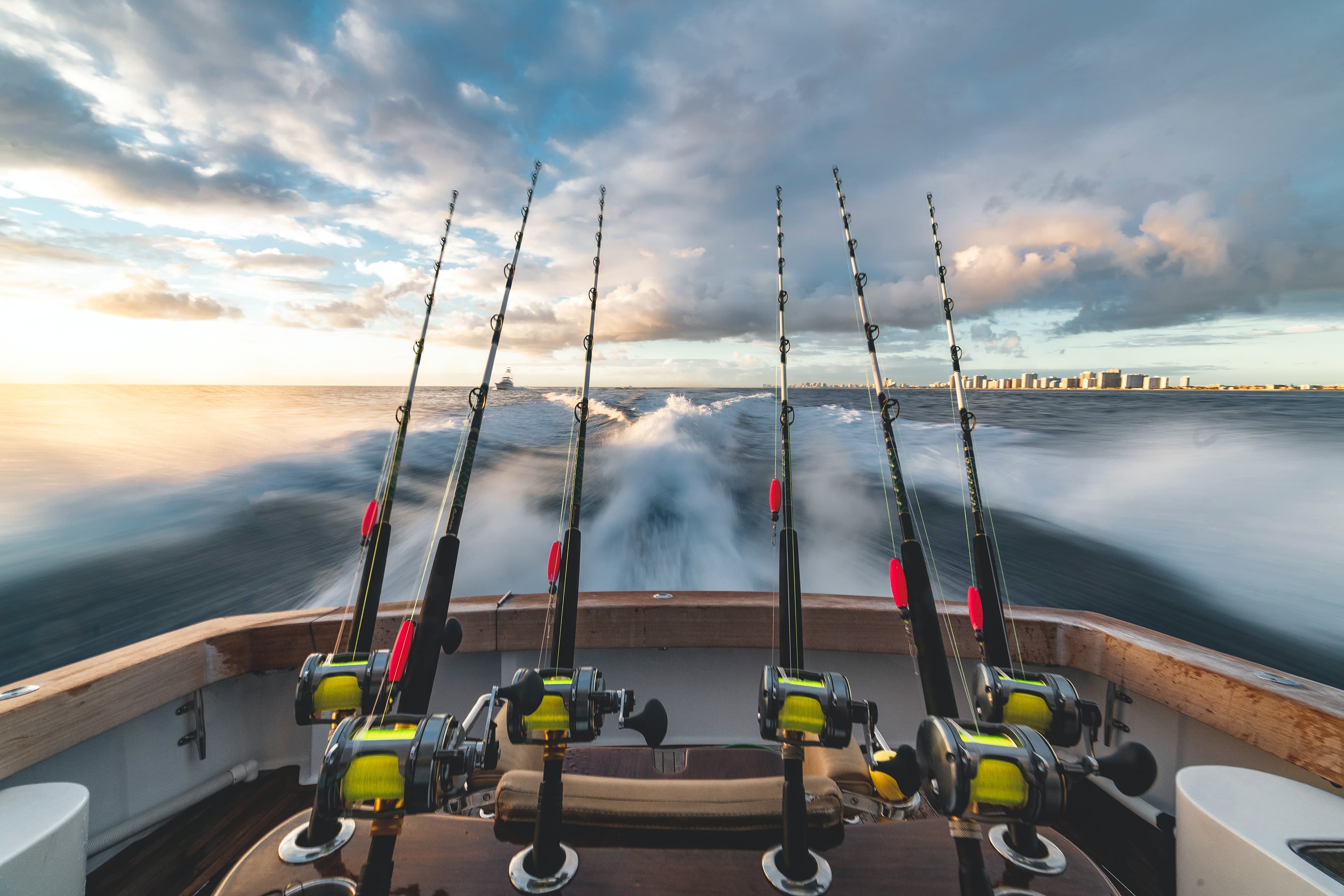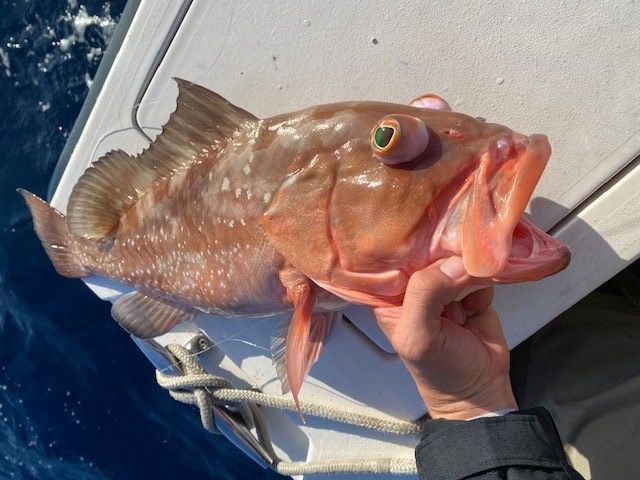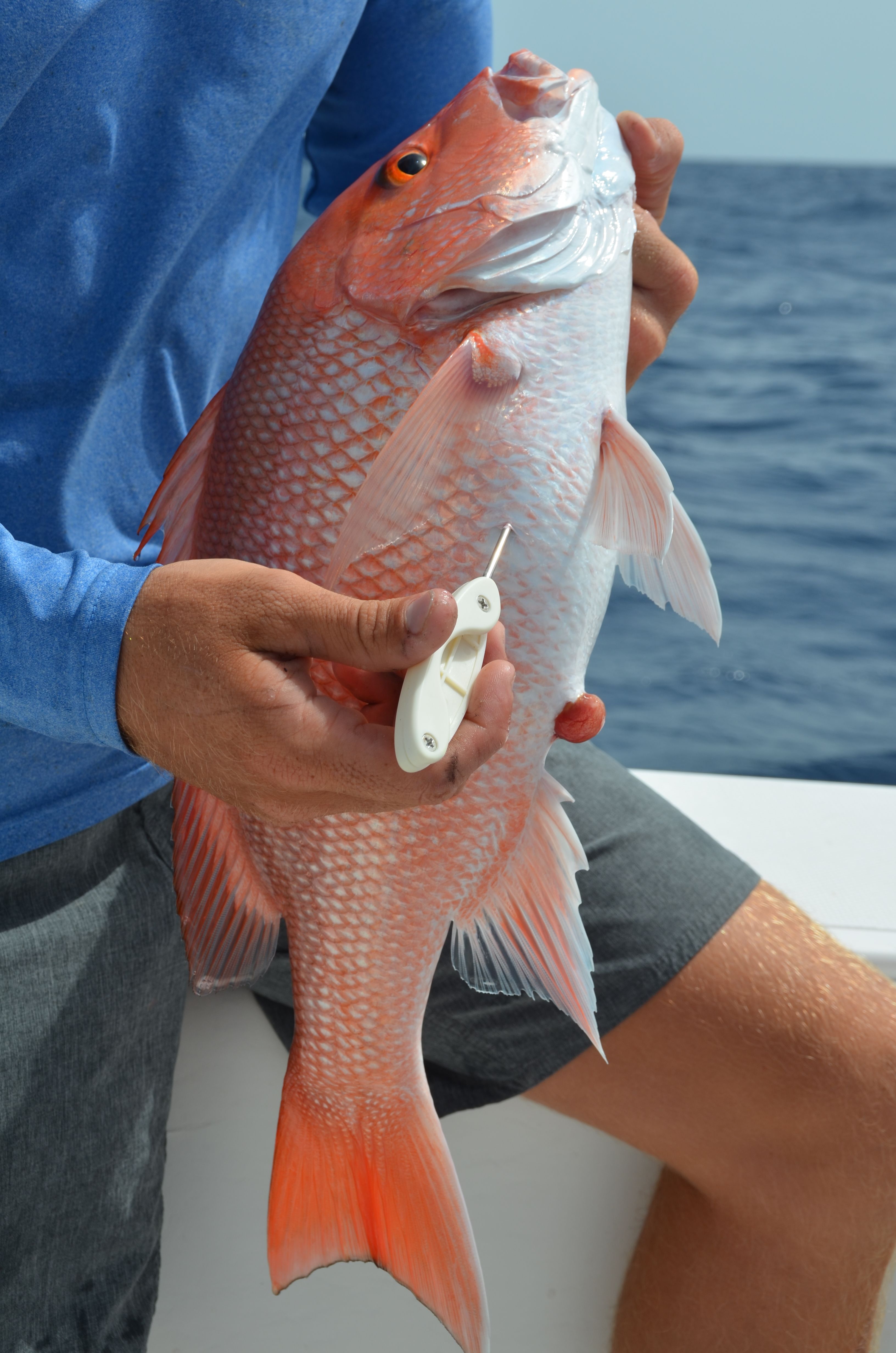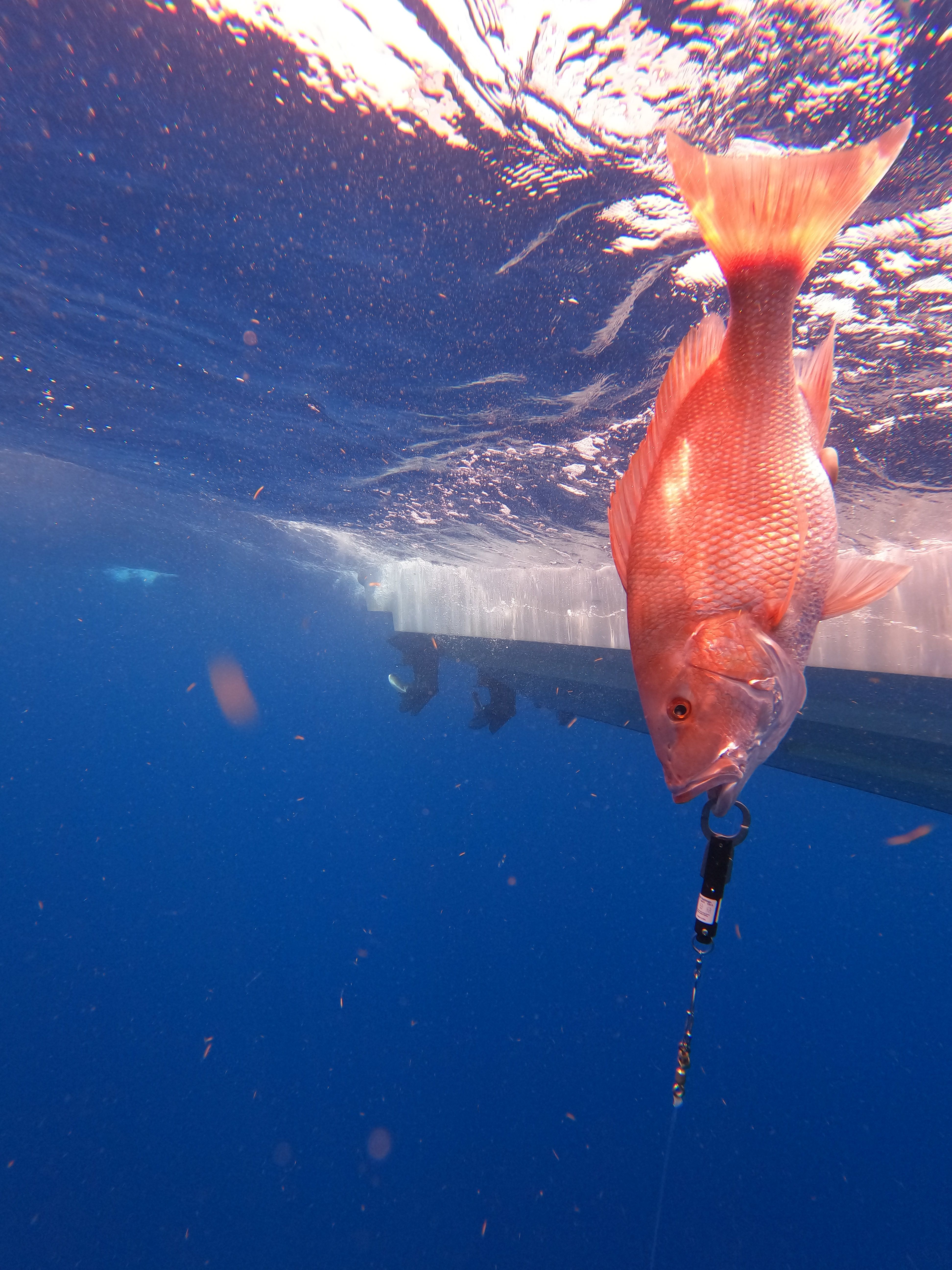What is Barotrauma and What Can Anglers do About it When Releasing Fish?


Red grouper with signs of experiencing barotrauma
Red grouper with signs of experiencing barotrauma

Example of venting a fish
Example of venting a fish

Fish being returned using the weighted descending method
Fish being returned using the weighted descending method
Fish brought from deep water to the surface may experience pressure-related injuries known
as barotrauma.
Barotrauma occurs as gases in a fish’s organs and tissues expand on the way to the surface. Signs of barotrauma include bulging eyes, the stomach protruding through the mouth, a bloated belly, protruding intestines, and bubbling scales. The deeper the fish is caught, the higher the likelihood that it will experience barotrauma upon being brought to the surface.
Fish experiencing barotrauma are often not able to swim back down to depth if they are released. Fishermen release fish for a variety of reasons. For example, fisheries regulations may prohibit keeping certain species or fish outside of a specific size range. The fish may not be the species the angler is targeting, or the cooler may already be full. Some anglers simply prefer to engage in catch and release fishing for sport. Regardless of the reason for release, fish suffering from barotrauma need assistance to
increase the chances that they will survive upon release.
There are two techniques that anglers can utilize to increase the survivability of released fish: venting and weighted descending. Venting refers to the process of releasing the gas that has expanded in the fish’s swim bladder. Using a sharp and hollow tool, puncture the body of the fish at a 45° angle behind the pectoral fin to reach the swim bladder. It is important not to use a knife to do this, as the instrument needs a hollow opening through which the gas can escape. Anglers should be mindful to not stab themselves with the venting tool and should be sure to follow the proper procedure so they do not cause further injury to the fish.
Weighted descending is the process of assisting a fish’s return to depth using tools known as fish descending devices. Transporting fish to depth recompresses the gases that have expanded in the fish’s body. Descending devices may also reduce the likelihood of sharks and other predators eating the fish during its release. Examples of descending devices include a protective cage or “fish elevator”, a lip clamp tool, and an inverted hook, all of which carry fish to depth before releasing them. When releasing fish, handle fish gently and keep them in the water for as long as possible to minimize stress on the fish. Have your dehooking, venting, and descending tools available and ready. Work quickly to increase the chances of fish surviving their trip to the bottom.
A new regional initiative, the Return ‘Em Right project, aims to educate anglers on best release practices for reef fish in the Gulf of Mexico. This project will benefit anglers as well as reef fisheries by equipping anglers with knowledge and tools to increase the survivability of released fish. Upon completing a short training module, participating federally permitted charter boat captains and private anglers will receive release gear, including venting and descending devices, at no cost to the angler. Captains and anglers interested in preregistering for the program can visit https://returnemright.org/.
For visual demonstrations of best practices for fish venting and descending, see a five-part series of educational videos produced by Florida Sea Grant.
Be sure to subscribe to our Fisheries, Aquaculture, and Seafood Newsletter for more!
Subscribe at tx.ag/FASnews

